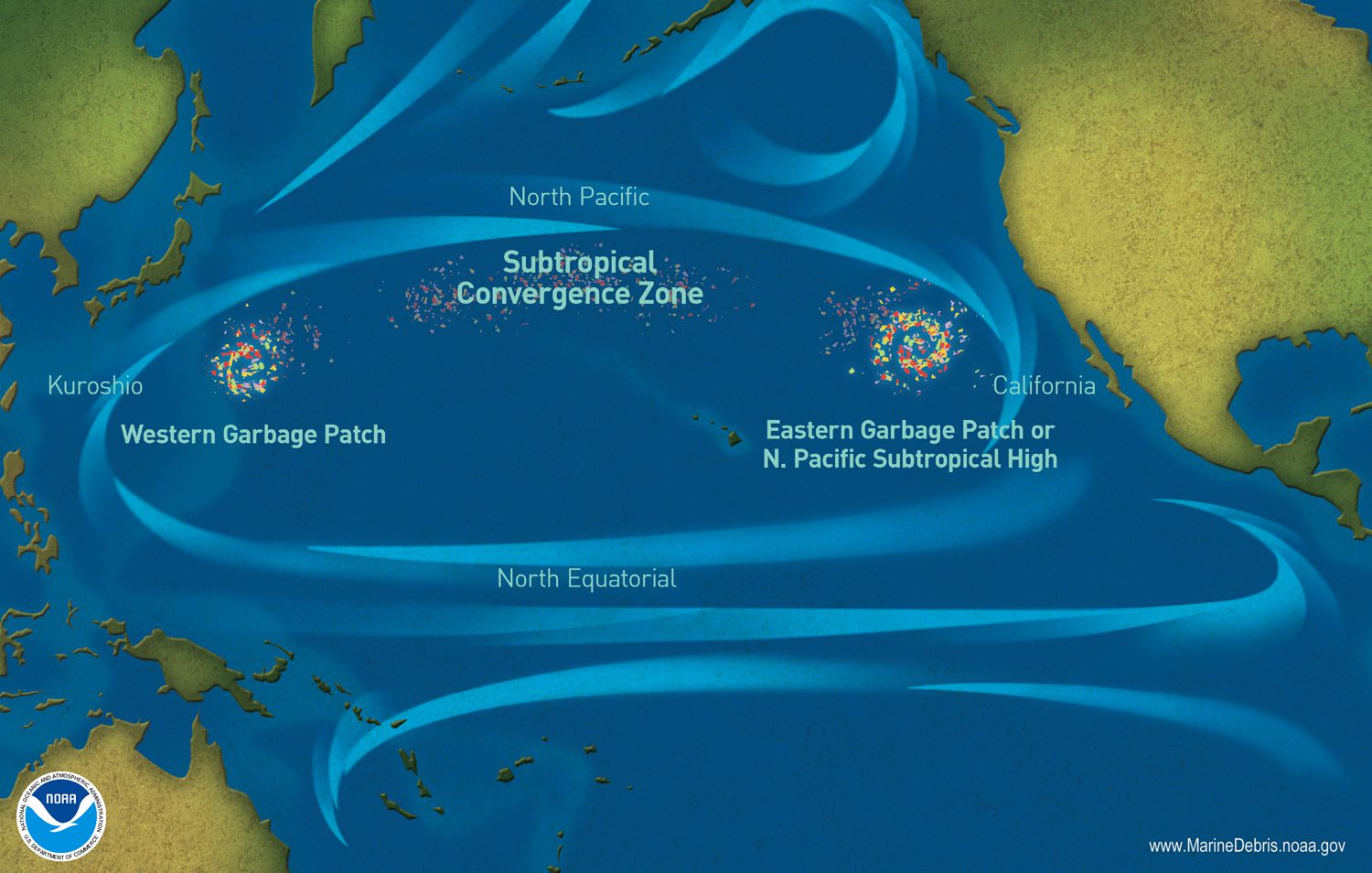The Great Pacific Garbage Patch is a collection of marine debris in the North Pacific Ocean. Otherwise known as the Pacific trash vortex, the garbage patch is two distinct accumulations of debris bounded by the massive North Pacific Subtropical Gyre. Marine debris is litter that ends up in oceans, seas, and other large bodies of water.
How it builds up?
The area in the center of a gyre tends to be very calm and stable. The circular motion of the gyre draws debris into this table center, where it becomes trapped. A plastic bottle discarded off the coast of California, for instance, takes the california current south toward Mexico. There it may catch the North Equatorial Current, which crosses the vast Pacific. Near the coast of Japan, the bottle may travel North on the powerful Kuroshiro Current. Finally, the bottle travels eastward on the North Pacific Current. The gently rolling vortexes of the Eastern and Western Garbage Patches gradually draw in the bottle.
The amount of debris accumulates because much of it is not biodegradable. Many plastics, for instance, do not wear down. Because, the patch is so far from any country’s coastline, no nation will take responsibility or provide funding to clean it up. However, many organizations are dedicated to preventing the patch from.

How to Help
Scientist and explores agree that the best way to clean up the Garbage Patch is to limit or eliminate our use of disposable plastics and increase our use of biodegradable resources. Organizations such as Plastic Pollution Coalition and the Plastic Oceans Foundation are using social media and direct action campaigns to support individuals, manufacturers, and businesses in their transition from toxic, disposable plastics to biodegradable or reusable materials.